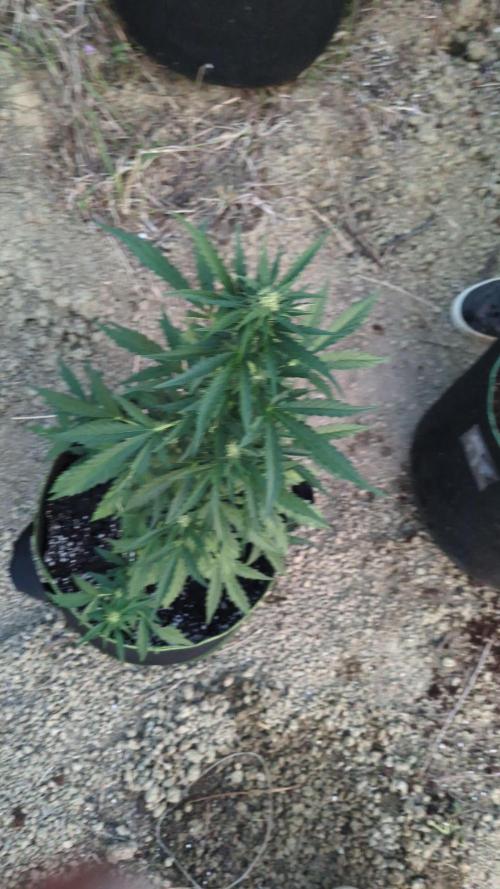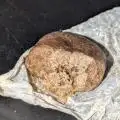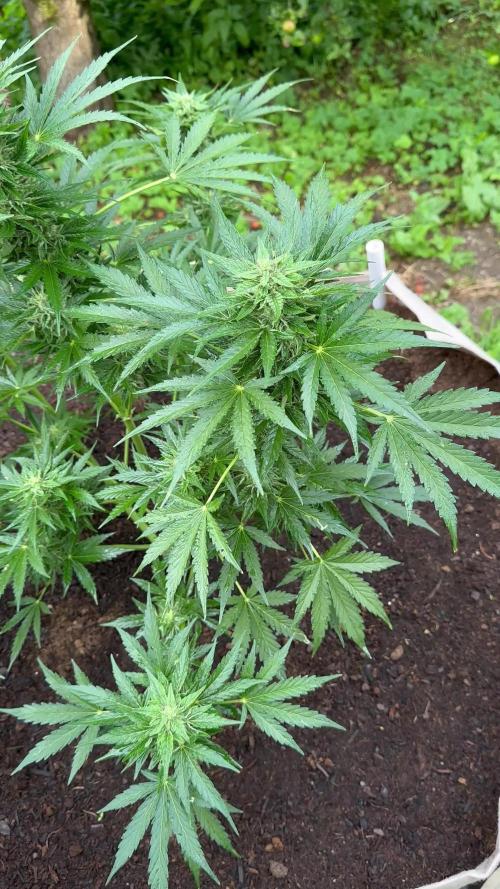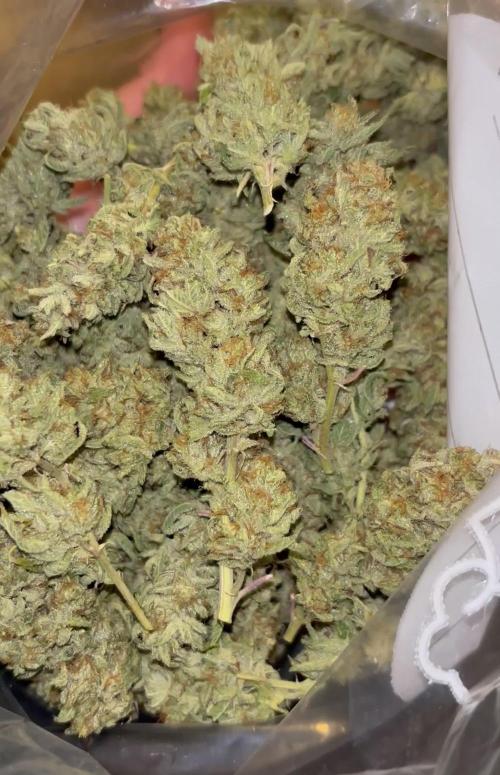The Grow Awards 2026 🏆 





























Likes
Comments
Share


@TheObserver
Follow
Stop LST.
Decreasing light phase because I need to harverst before holidays
Likes
10
Share


@MG2009
Follow
03/16/2022
All progressing well.
We are at 12 + hours of light will not suffer any set back from revegging, fingers crossed. For a girl.
Day # 6 updating early this week.
Likes
29
Share


@nonick123
Follow
Día 41 (03/06) Riego 750 ml sólo H2O pH 6.2
Empieza a engordar sus cogollos 😍
Día 42 (04/06) Riego con 750 ml H2O + Regulator 0,15 ml/l + P-Boost 0,5 ml/l + K-Boost 0,5 ml/l + CaMg-Boost 0,25 ml/I +TopBooster 0,2 ml/l - pH 6.2
Está apilando y engordando sus cogollos, y empieza a mostrar senescencia en la hojas inferiores. La veo capaz de acabar en 8-9 semanas! El tiempo lo dirá
Día 43 (05/06) Riego 750 ml sólo H2O pH 6.2
Día 44 (06/06) Riego con 750 ml H2O + Regulator 0,15 ml/l + P-Boost 0,5 ml/l + K-Boost 0,5 ml/l +TopBooster 0,2 ml/l - pH 6.2
Día 45 (07/06) Riego 750 ml sólo H2O pH 6.2
Está empezando a mostrar tonos morados en los cogollos! 😍
Día 46 (08/06) Riego con 750 ml H2O + Regulator 0,15 ml/l + P-Boost 0,5 ml/l + K-Boost 0,5 ml/l + CaMg-Boost 0,25 ml/I +TopBooster 0,2 ml/l - pH 6.2
El tamaño del cogollo central es impresionante 💥😁
Día 47 (09/06) Riego con 1 Litro H2O + Regulator 0,15 ml/l + P-Boost 0,5 ml/l + K-Boost 0,5 ml/l + CaMg-Boost 0,25 ml/I +TopBooster 0,2 ml/l - pH 6.2
💦Nutrients by Aptus Holland - www.aptus-holland.com
🌱Substrate PRO-MIX HP BACILLUS + MYCORRHIZAE - www.pthorticulture.com/en/products/pro-mix-hp-biostimulant-plus-mycorrhizae
Likes
Comments
Share


@The_Lonely_Farmer
Follow
So I received some fastflowering testers from the amazing fastbuds I cannot wait for these girls too show themselves and start growing 🌱
Thank you so much too the fastbuds team I'm very excited too see what they become 🤞 👀🙏
I have not yet decided which nutrients too use between shogun and aptus but I may use both let's see.
hope you will feel comfortable too advise as I go along any comments are welcome.
Any aptus nutrients users please feel free on giving tips as I think I will be using aptus
Stay blessed growmies 🙏🌱💚
Likes
8
Share


@HybridQueen
Follow
Hi guys I’m Hybrid Queen a uk female grower. New to grow diaries.
I’m new to growing so will be learning as I go.
This is Panty Punch by Seedstockers.
Using HPs set to 400w. I haven’t used LED grow lights before so will stick to what I know.
I’ve topped her a few days ago.
See you next week guys ❤️
Likes
23
Share


@PrairieFrostGrow
Follow
*
***************** Week 1 of Growth From Seed, April 11 to 17, 2020 - Days 1 to 7 from germination **********************
*
Okay, we are off running now. Through germination and was delighted to experience 100% success rate👍
Excited to run this strain from Mephisto. It is supposed to be a couple of their strongest and fruitiest crossed. My Skywalker was a good experience and I could have ran her again but I wanted to try another strain from this breeder and see if there are some similarities......this sounded fun👍😋 Just popped one of these girls and will probably miss some timing but that is how the game works.......learn from this one with hopes of dialing in the siblings😀👍
Greater focus on VPD this run. Already pushing the humidity higher than I ever have with having controller set at 72% with temperature at 79 degrees. I have been reviewing the numbers and I have normally been close but it looks like I have to raise everything by about 10% and for a few weeks long😬😬😬😬😬😬 Trust the science and lets learn some more from this grow!!!
*****Daily Detail:
Apr 11, Day 1:
- VPD - 1.2
- 500ml first watering given with nutrients as listed. (minus Velokelp)
- pH water to 5.6
- Girl is up and looking like she is ready to go.
Apr 12, Day 2:
- VPD - 1.0
- 500ml feeding with VeloKelp @ 2ml/L, Piranha & Voodoo @ 1ml/L. pH to 5.6
- lowered light intensity a bit more.
- She is getting taller now. Seems to be speeding up. Still the slowest of the group.
- She seems most affected by too much light.
Apr 13, Day 3
- VPD - 1.2
- 500ml water with 0.5ml/L each of Piranha & Voodoo, Dual Fuel.
- 300ppm with 5.4pH.
Apr 14, Day 4
- VPD - 1.1
- 500ml water with Virtathrive and Piranha & Voodoo Juice @ 1ml/L, VeloKelp @ 2ml/L, and SensiCal @ 0.5ml/L.
- 210ppm with 5.5pH.
- She is doing well. Starting to see the first set of leaves growing a little odd. Both offset to one side of the pot. Good progress though little early to worry about some things.
Apr 15, Day 5
- VPD 1.0
- 250ml water with VeloKelp @ 1ml/L.
- 95ppm with 5.4pH.
- She was a little slow and little dark but she seems to be coming along. Once she strengthens up the bend should come out of her stem👌🤞
Apr 16, Day 6
- VPD 1.0
- 500ml water with Piranha & Voodoo @ 1ml/L, Vitathrive @ 0.5ml/L, Dual Fuel @ 0.5ml/L.
- 300ppm with 5.8pH
- She is looking more healthy today. Being more robust.
- Her second set of leaves are not as progressed as the other girls. Just an observation.
Apr 17, Day 7
- VPD 1.1
- Turned on flower light on UnitFarm this afternoon and they are happier.
- Dry out day today and no added water/feed, just misting.
- Let the medium dry out a bit and give a nice week 2 feed tomorrow.....they are ready for a little more nutrients now.
- Not a lot to report today. She is happier than yesterday and getting bigger......can’t ask for much more👍💪👌
Likes
29
Share


@Reaper
Follow
buds fatten up now,
The hydro plant is destroying the soil completely, the buds are 3x as big lol.
i started this grow during the cold winter temperatures, thats why everything got slowed down a few weeks. i expect to harvest withing 2-3weeks from here.
Likes
13
Share


@GrowGuy97
Follow
Everything is going great, just waiting on flower tent to finish & these ladies will be going straight into flower😍✌️🏼🌱
Day 40 first day of flower, everything seems to be going ok so far!
Day 41 Can see they are starting to stretch!😍
Likes
12
Share


@SSKNFbyHAZE
Follow
Throughout the week, I give compost tea, and fermented plant juice once each ^^
Hope you guys have a wonderful day today ^^v
*** Please Like, comment & share ***
Highly appreciated -----/-----<@
Likes
Comments
Share


@Guerrilla_grower777
Follow
06/08/2025 20:15
Good climate but one day in the middle of the week had 2h of heavy Rain with some hail(FUCK) that damaged one branch of the frostbanger
Gorilla z bumping and frosting all good
Frostbanger unbelievable how frost It can be on her very first days of flower,this Will be frost and a banger😂
Apricot auto and Coco milk now transplanted ,had some problems bringing them here that's why they look sad
Fucking boars this place Is so dangerous right now
Likes
36
Share


@nonick123
Follow
Día 44 (15/07) Wow! No hay shock de trasplante! 😍💥😁
Todas las ramas se han estirado hacia arriba tras el ajuste de LST y se están formando nuevos nodos rápidamente
Esta combinación de nutrientes de Lurpe + substrato de PRO-MIX HP es una maravilla 😍
Día 45 (16/07) Ayer tuvimos ola de calor (37 ºC) y han aguantado muy bien!
A última hora de la tarde (cuando ya no había sol directo) les apliqué H2O en spray foliarmente para refrescar los estomas
Hoy parece que vuelven las temperaturas estándar para esta época del año: 29 - 30 ºC en las horas centrales del día
Riego con 1 litro de H20 pH 6,5
Día 46 (17/07) Pequeños ajustes de LST
Hay algunas ramas inferiores que no se han formado / estirado mucho
Lo más probable es que haga una buena limpieza este domingo, 7 días después del trasplante, para dejar solo los brotes por encima del 4º nudo
Día 47 (18/07) Riego con 0,5 litro de H20 pH 6,5
Este domingo (día 50) haré limpieza de partes bajas y tal vez también de nuevo topping en las 4-6 ramas principales 😁
Día 48 (19/07) Día de muchísimo calor con 37 ºC. A ver como lo llevan!
Riego con 0,5 litro de H20 pH 6,5
Día 49 (20/07) Para ayudarles a llevar mejor el calor de las horas centrales del día, coloca una malla de sombreo (70%) sobre el invernadero
Lo cierto es que se nota que baja mucho la temperatura debajo de la malla! Van a estar más fresquitas! 😍
Riego con 0,5 litro de H20 pH 6,5
Día 50 (21/07) Training session!
Hago limpieza del tercio inferior de la planta, de todas las ramas y nudos que no superan la línea del dosel marcada por el 4º nudo (1er topping)
También hago topping (2º) a todas las ramas principales
La idea es tener 12 ó 14 colas principales para que no se hagan muy altas
De paso saco unos cuantos clones de las ramas inferiores eliminadas 😁💥
Para superar el estrés, hago las siguientes aplicaciones y riego:
- Riego con 1 Litro de Té Vegetativo de Lurpe Solutions. Preparación: 24 horas con bomba de aire (oxigenación) con ingredientes:
Green Sunrise 8 ml/L + Insect Frass 16 ml/L + Hummus Lombriz 8 ml/L + Melaza 1 ml/L + Kelp Hidrolizado 0,25 g/L
- Aplicación foliar Kelp hidrolizado de Lurpe Solutions a 0,25 ml/l
💦Nutrients by Lurpe Solutions - www.lurpenaturalsolutions.com
🌱Substrate PRO-MIX HP BACILLUS + MYCORRHIZAE - www.pthorticulture.com/en/products/pro-mix-hp-biostimulant-plus-mycorrhizae
Likes
51
Share


@Chumpkilla
Follow
11/20/23 - Day 14 - Today the box flipped to Veg state. I made the decision in the software yesterday, its take effect the next day at the light on schedule.
The system will do a couple of things now that it's in Vegetative mode.
Lights will remain at 18Hrs On/6hours Off, however the intensity will slowly creep from 30% intensity to 100% within a couple of days.
Air Temp will remain the same at 79deg. F
Humidity will go down to 50%
Water temp and PH will remain the same, 64.5deg. F and 6.0Ph
Because I have it all hooked up for Auto water. It started the first video about 1 min after lights on. It drained the water, refilled it. After it refilled it, it turned on the air stone, started the water temp cool down, and it slowly over the next 30 minutes delivered nutes, and finished it off with balancing the PH. All of this was done on its own. I DID NOTHING. Other than verify because why not. I sat back and watched the system work.
This time around with everything hook up for auto I really am not doing much. The hardest part of this grow so far is not opening the door while the light is off.
the rest of the week I don't expect to do much. I will update daily with pictures and things that I am noticing.
This is an Auto strain. I am a little worried about growing an Auto in this box. usually, I can control the growth utilizing the lights because I'm space limited. This time the plants going to flip to flower on its own. I'll need to make sure I am training and cropping early on.
11/24/23 - Day 18 - Everything is starting to get aggressive in there. I say that because the new nodes are growing out of new nodes on the top. It's like its packed full of plant and it all wants to come out at the same time. The leaves have more serrated Leafs than I have seen on any of the other strains I have grown. Ill post a picture of the last time I grew this strain. I did it in Coco Coir. It will be cool to see the differences.
11/25/23 - Day 19 - The Leaves are all reaching up, and the plant is growing so fast! Its such a bushy plant.
Likes
2
Share


@KannaGrowing
Follow
Estamos en la primera semana de vegetativo, ya que a la anterior se la conoce como semana de germinación.
Las plantas empiezan a mostrar las primeras hojas reales por encima de los cotiledones.
Cuidado con que la humedad relativa del aire, no sea demasiado baja, lo ideal sería alrededor de un 65%.
En esta etapa solo regamos suavemente con agua cada 5 días aprox.
* Una de las plantas no ha crecido correctamente y la doy de baja.
Likes
11
Share


@adam_pawloski87
Follow
Such an amazing flower, really great especially a phenomenal hash producer yall will be super satisfied with this one!! She’s a shorty but Make sure you top 4 to 6 times or even more to have all them gooey bud producing heads , Dirtyblonde is absolutely an amazing plant!!
Likes
Comments
Share


@Seeds_growforgreen
Follow
Lookimg good blooming now, nice flower. Nice week. Need sunny days now. Rainy is bad.




























